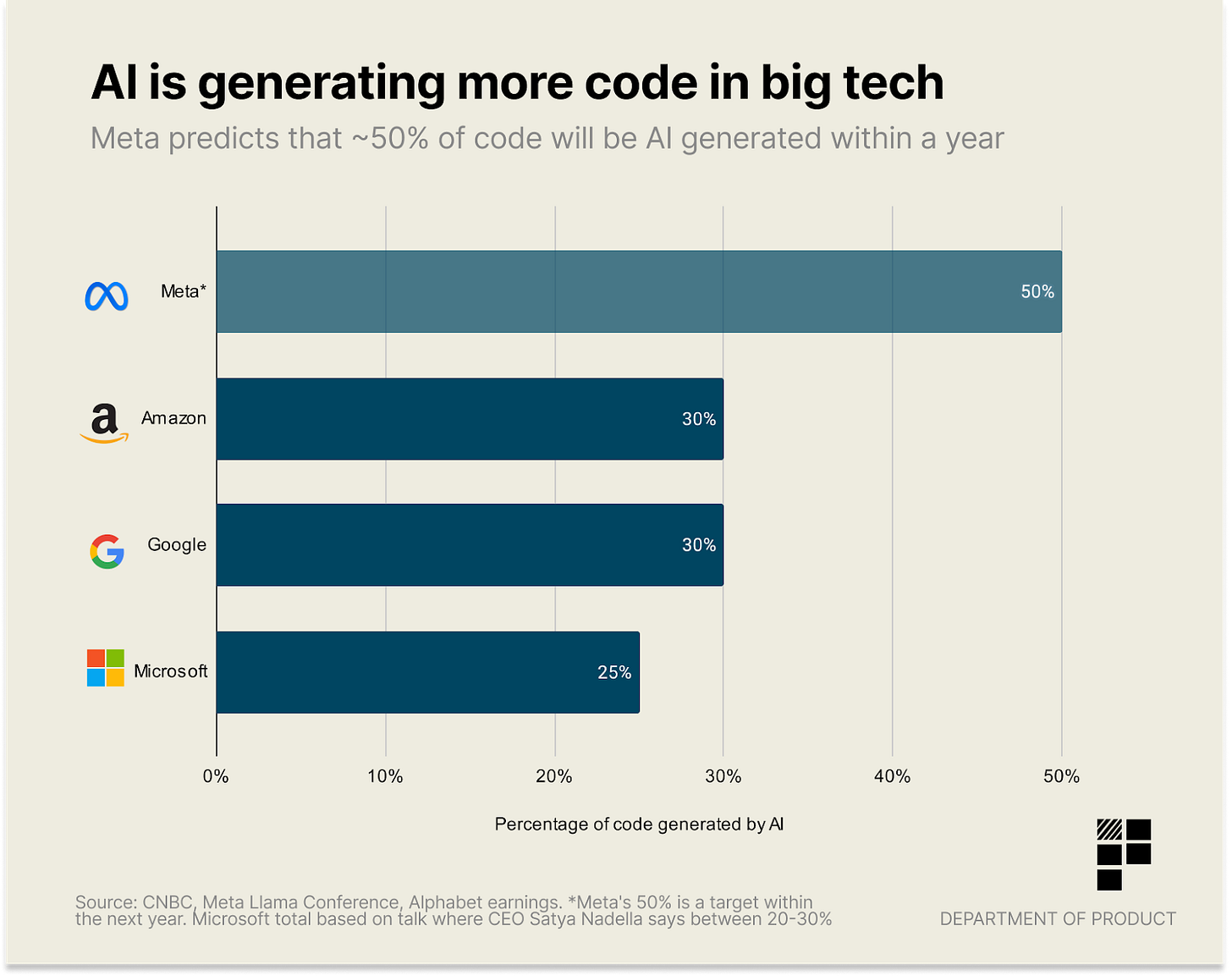The Future of AI Product Management
As AI accelerates building, the real challenge becomes knowing what to build
For most of the history of software, code was the bottleneck—expensive to write, slow to debug, and requiring armies of engineers to scale.
That equation has flipped. AI copilots now generate code from natural language prompts, and autonomous agents can spin up prototypes in hours that once took weeks.
The scarce resource is no longer the ability to build. The scarce resource is clarity—knowing what to build.
This is where product management comes in. Far from being replaced by AI, product management is becoming more critical than ever. As the cost of development collapses, the penalty for building the wrong thing grows.
In a world where anyone can ship software, the leverage shifts to judgment, prioritization, and orchestration—the very skills great product managers bring.
Economics of Cheap Code
There’s a simple principle at work: when the price of a complement good falls, demand for the paired good rises. Cars became cheaper, and gasoline demand soared.
Code is getting cheaper, which means demand for clear product specifications will spike.
History shows that efficiency drives more consumption, not less.
AI coding tools are proof: teams use it not only to speed up existing work, but to justify experiments and side projects that once seemed too costly.
The floodgates are opening, and every new idea will need someone to decide if it deserves the time, the data, and the user’s attention.
The Expanding Role of AI Product Managers
AI product management isn’t just traditional PM with a new focus—it requires a broader skill set.
A great AI PM must master:
AI literacy – understanding what models can realistically achieve and how lifecycles work.
Iterative development – working through trial-and-error cycles of training and tuning.
Data fluency – designing, sourcing, and governing datasets.
Ambiguity tolerance – navigating unpredictable model outcomes.
Responsible AI – balancing innovation with trust, bias mitigation, and guardrails.
The Tension: Engineers vs. PMs in an AI World
Engineers are adapting to AI faster than PMs. They already think in abstractions and now have copilots to extend their leverage. In many startups, technical founders double as PMs by default.
This creates a tension:
Will engineers absorb more of the PM role?
Will hybrid “builder-PM” roles emerge, blending prototyping and strategy?
Or will PMs evolve into orchestrators of multi-agent workflows, focusing on where automation ends and human value begins?
However it plays out, the underlying function—deciding what to build—doesn’t disappear. It becomes even more valuable as possibilities expand.
Career Implications: The Rise of the AI Product Manager
Demand for AI-literate PMs already exceeds supply, and the gap is widening. Companies don’t just need backlog managers; they need PMs who can prototype with AI tools, understand model limitations, and translate research into user value.
Tomorrow’s PM job description will include:
Prompting agents and stitching together no-code workflows.
Continuous discovery at the pace of AI’s evolution.
Acting as translators between AI researchers and end users.
Creating MVPs (vibe-coding!) to drive alignment
Example: Spotify’s personalization systems. PMs there balanced cutting-edge AI with user trust, ensuring personalization didn’t sacrifice transparency or control.
Beyond Software: AI PMs in Robotics and Physical Systems
The influence of AI PMs extends beyond software. As AI powers robotics, logistics, and autonomous systems, the role expands into domains where errors carry higher costs.
A buggy app can be patched overnight. A buggy robot can cause injury, disrupt supply chains, or trigger regulatory backlash.
Key challenges for PMs in physical AI systems:
Safety and regulation – self-driving cars must meet NHTSA and EU rules; surgical robots face FDA approvals.
Hardware-software integration – balancing AI ambition with edge hardware limits like latency and power.
Ethics and liability – deciding who’s accountable when machines err, and ensuring explainability.
Testing constraints – you can’t A/B test braking systems on highways; PMs must rely on simulation and staged rollouts.
Example: autonomous driving. A PM isn’t just prioritizing lane-keeping features—they’re defining data strategies, weighing predictive performance against safety guarantees, and coordinating across regulators, hardware vendors, and software teams.
This logic applies equally to industrial robotics, drones, and even consumer devices. In these contexts, PMs don’t just define product-market fit—they define the boundaries of what’s safe, legal, and possible in the physical world.
A Great Time to Build (and Manage)
AI is collapsing the cost of building while magnifying the cost of building the wrong thing.
That makes product management not less relevant, but more essential. The leverage point has shifted from code to clarity, from engineering velocity to product judgment.
For those who can combine technical fluency with product intuition, this is the best time in history to be a product manager.
The future isn’t just faster code—it’s smarter choices. And those choices will belong to AI Product Managers.





